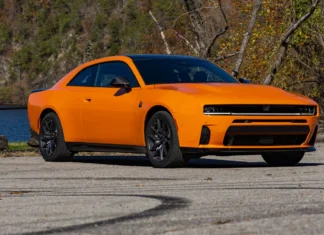BMW debuted the first production iteration of its “Neue Klasse” design with the new iX3 this week.
Love it or hate it, BMW’s styling has been going through quite an evolution over the past few years. That extends to the brand’s next-generation electric vehicles based around the “Neue Klasse” language that debuted in concept form last spring. Now, the 2026 BMW iX3 is bringing that generational aesthetic leap forward into production, and is taking a stop off at the IAA show in Munich this week before it actually hits the streets next year.
Unlike the last-generation iX3 that we never saw in North America, this model is remarkably different than the gas counterpart, which itself saw a major update for the 2025 model year. While a few of the core elements from Neue Klasse translated into the model we can buy today — basically, less kidney grille and more screen — the iX3 takes a far bolder tack with both its exterior and interior design.
On the outside, the instant eye-catching element of the 2026 BMW iX3 is the front fascia. Unlike some recent BMWs (looking at you, 7 Series) the automaker is stepping away from comically large kidney grilles toward a slimmer and arguably more classic design, similar to the original Neue Klasse models like the 1600 or the 02 Series (i.e. 2002). Being an EV, the “grille” elements are largely smoothed over for better aerodynamics, though the lower fascia opens up a bit to aid cooling.
The 2026 BMW iX3 gets a fairly simple side profile, with the wheel arches really being the only place we see any angles or creases, and the flush door handles complete the smoothed-over look. Around back, the iX3 gets its own unique set of thin LED taillights, with the more angular bits of the tailgate meant to draw your eye toward that feature, much like the hood lines pull your eye toward the faux kidney grilles up front.
Looking inside the new BMW iX3
As you’d expect, the interior brings in plenty of futuristic tropes to separate it from the gasoline X3. The layout is fundamentally similar to the larger iX, what a prominent center console and most of the controls relegated to the four-spoke steering wheel or the central 17.9-inch display. Sticking with the steering wheel for a second, though, it’s certainly wackier than any unit you’ll find on another current BMW. Not only does it have that extra spoke, but the buttons on each side don’t actually connect up to the outer wheel itself. The buttons are also contextual, so they will only light up when the appropriate feature is either active or available to use.
Down toward the windshield, you likely noticed another increasingly common feature: Even more screen! In this case, the iX3 gets a 43-inch-wide display as part of BMW’s “Panoramic iDrive” setup. That buzz phrase doesn’t just focus on that lower display, which encompasses your gauge cluster as well as another cluster of information in the middle, then a bit more on the passenger side. It’s a more holistic term the brand is using to create what it says is a “neatly judged balance between digital functions and physical elements”.
“Where are the physical elements”, you ask? Well, BMW does still have actual stalks for the windshield wipers and turn signals. On the doors, you still get conventional adjustments for the windows, mirrors and seats. Then on the center console, there are buttons for the hazard lights, defrosters, the electronic parking brake and the gear selector.
Unlike some newer EVs, the BMW iX3 does support wireless Apple CarPlay and Android Auto, with any media or navigation information displayed on the “Panoramic Vision” screen as well as the optional head-up display.
Powertrain, battery size and range specs
Today, BMW just debuted the iX3 50 xDrive model, so all the specs will be based around that trim. You get a standard dual-motor, all-wheel drive setup with the automaker claiming an output of 463 horsepower and 473 lb-ft of torque. That’s good enough to get this SUV from 0-60 in just under 5 seconds, with the top speed pegged at 130 mph. So, it’s not a neck-snapper, but I wouldn’t be too surprised to see an M variant pop up somewhere down the road.
This particular iX3 uses a 700-volt, 109-kWh lithium-ion battery pack, with a 400-kW DC fast-charging capability. BMW says that setup is good for a driving range of around 400 miles. When you do have to stop and charge (at a charger that can support higher outputs), you can get about 230 miles of range in 10 minutes, or manage 10-80% state-of-charge in 21 minutes. Stick it on an 11-kW Level 2 AC charger at home, and BMW says you can fully replenish the battery in 11 hours. If that’s too slow for your needs, BMW also sells a beefier 22-kW unit.
How much will the iX3 cost and when can you buy one?
BMW plans to build the new iX3 at its plant in Debrecen, Hungary, and will ship it out to European buyers first. They’ll get it in early 2026, but we’ll have to wait until next summer to actually get them in the US. When it does arrive over here, BMW says to expect a staring price tag around $60,000 for the iX3 50 xDrive.
A lot of what you see here should also translate to the upcoming electric BMW 3 Series, so if this SUV’s not really your jam, that may be worth checking out in the next little while.





















